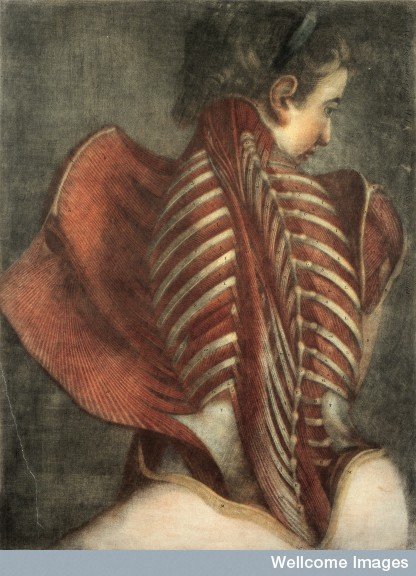By Drs. Del Buono, Best and Maffulli
Letter to the Editor
Dear Prof Khan,
“The soul in darkness sins, but the real sinner is he who caused the darkness”
Victor Hugo, Les Miserables
We commend the authors for their efforts to provide a much needed new classification of muscle injuries in their article Terminology and classification of muscle injuries in sport: The Munich consensus statement (open access); the fact that highly experienced clinicians became involved in this field increases the potential impact upon both daily practice and future research fields 1. However, we wish to express our concerns regarding the actual applicability of this proposed classification system in clinical practice, especially for what concerns the translation to management of these injuries.
Notably, criticizing traditional terminology, as ‘passè and confusing’, the authors highlight the need for a more standardized definition and universal classification that reflects both functional and structural features of muscle injuries. We respectfully point out that the term ‘functional’ is not well defined, and it is used with various ambiguous and at times inconsistent meanings, such as fatigue-induced muscle disorder or delayed-onset muscle soreness (DOMS). We underline that both functional and structural disorders may lead to functional limitations in athletes, and these latter may also hide misunderstood structural changes of the muscle. Therefore, from a diagnostic view point, both the terminology and the ability to distinguish these two entities pose challenges. For structural changes, the authors also suggest that the term “tear” better reflects the structure of the muscle, recommending not to use the term “strain”. The latter, conversely, implies the biomechanics of the injury 1. We point out that the term “strain” reflects some radiological features (MRI and US). In fact, a strain is defined as a Grade I injury, in which less than 5 % of muscle fibers are disrupted, with a feathery oedema-like pattern, and intramuscular high signal on the fluid-sensitive sequences at MRI. This condition is well differentiated from grade II (partial tear) and III (complete tear) lesions 2. The proposed distinction is further complicated by the fact that it is unlikely that MRI is sensitive enough to detect the presence of microscopic disruptions, which may be decisive in differentiating ‘functional’ from ‘structural’ muscle injuries.
We recently proposed that a novel anatomic system was to classify acute muscle strains 2. Realistically, we suggest that the proper identification and description of the injury site could be prognostic for muscle recovery. Arising from the traditional imaging classification (MRI and US), we have simply considered the anatomy of the muscle, and classified the lesion as type I, when involving the proximal MTJ, type 2, for muscle belly injuries, and type 3, when the distal MTJ is torn. We accept that this classification system relies on clinical findings but also MRI (or ultrasound) scans. Specifically, to subcategorize muscle belly injuries, both coronal and axial views have to be taken into account. On coronal and sagittal imaging scans, the muscle belly may be injured proximally, in the middle, or distally. On axial sequences, we defined the injuries as intramuscular, myofascial, myofascial/perifascial, myotendinous, and combined.
Therefore, different from the classification system presented, which describes structural and functional muscle disorders, we propose a novel classification based on anatomical and imaging features: these aspects have a higher impact on diagnosis and management of these injuries. Imaging (US and MRI) assessment is not only helpful to help management 3, but it would also be used for assessment of injury severity and to predict the time of return to sport activity 2. Both classification systems likely have strengths and limitations, perhaps the next step is the validation of these systems and their ability to predict convalescence from sport and time for return to play.
References
1 Mueller-Wohlfahrt HW, Haensel L, Mithoefer K, Ekstrand J, English B, McNally S, Orchard J, van Dijk CN, Kerkhoffs GM, Schamasch P, Blottner D, Swaerd L, Goedhart E, Ueblacker P. Terminology and classification of muscle injuries in sport: The Munich consensus statement. Br J Sports Med In press.
2 Chan O, Del Buono A, Best TM, Maffulli N. Acute muscle strain injuries: a proposed new classification system. Knee Surg Sports Traumatol Arthrosc 2012;20:2356-2362.
3 Boutin RD, Fritz RC, Steinbach LS. Imaging of sports-related muscle injuries. Radiol Clin North Am 2002; 40: 333-362.
***********************************************************
Angelo Del Buono 1, Thomas M. Best 2, Nicola Maffulli 3
1 Department of Orthopaedic and Trauma Surgery, Campus Biomedico University, Via Alvaro del Portillo, 200, 00128 Trigoria, Rome, Italy
2 Division of Sports Medicine, Department of Family Medicine The OSU Sports Medicine Center, The Ohio State University, Columbus, OH, USA
3 Centre for Sports and Exercise Medicine, Barts and The London School of Medicine and Dentistry, Mile End Hospital, 275 Bancroft Road, London E1 4DG, England.